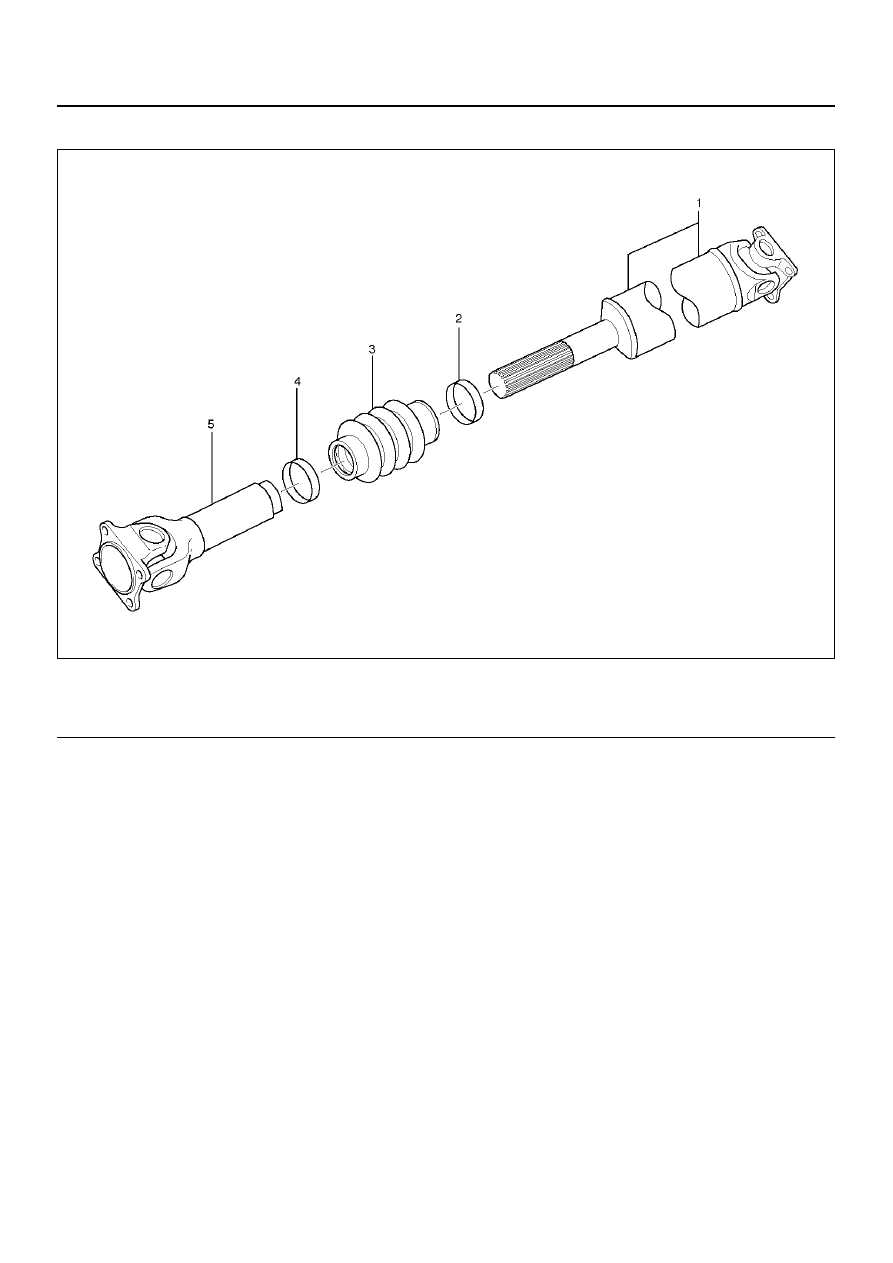Content .. 1738 1739 1740 1741 ..
Isuzu Amigo / Axiom / Trooper / Rodeo / VehiCross. Manual - part 1740

4C–18
DRIVE SHAFT SYSTEM
Slip Joint Disassembly (6VD1 Model Only)
401RW081
EndOFCallout
1. Lay the shaft horizontally on a bench and secure.
2. Indicate the original assembled position by marking
the phasing of the shaft prior to disassembly.
3. Using the flat blade of a screwdriver, pry the loose
end of the boot clamp upwards and away from the
propeller shaft boot. Be careful not to damage the
boot.
4. When boot clamps becomes loose, remove by
hand.
5. Repeat for the other boot clamp.
6. Remove the spline yoke assembly from the tube
assembly, by securing the boot with one hand and
pulling on the spline yoke.
7. Remove the boot from the tube assembly.
Legend
(1) Spline Yoke and Universal Joint Assembly
(2) Clamp
(3) Boot
(4) Clamp
(5) Tube and Universal Joint Assembly